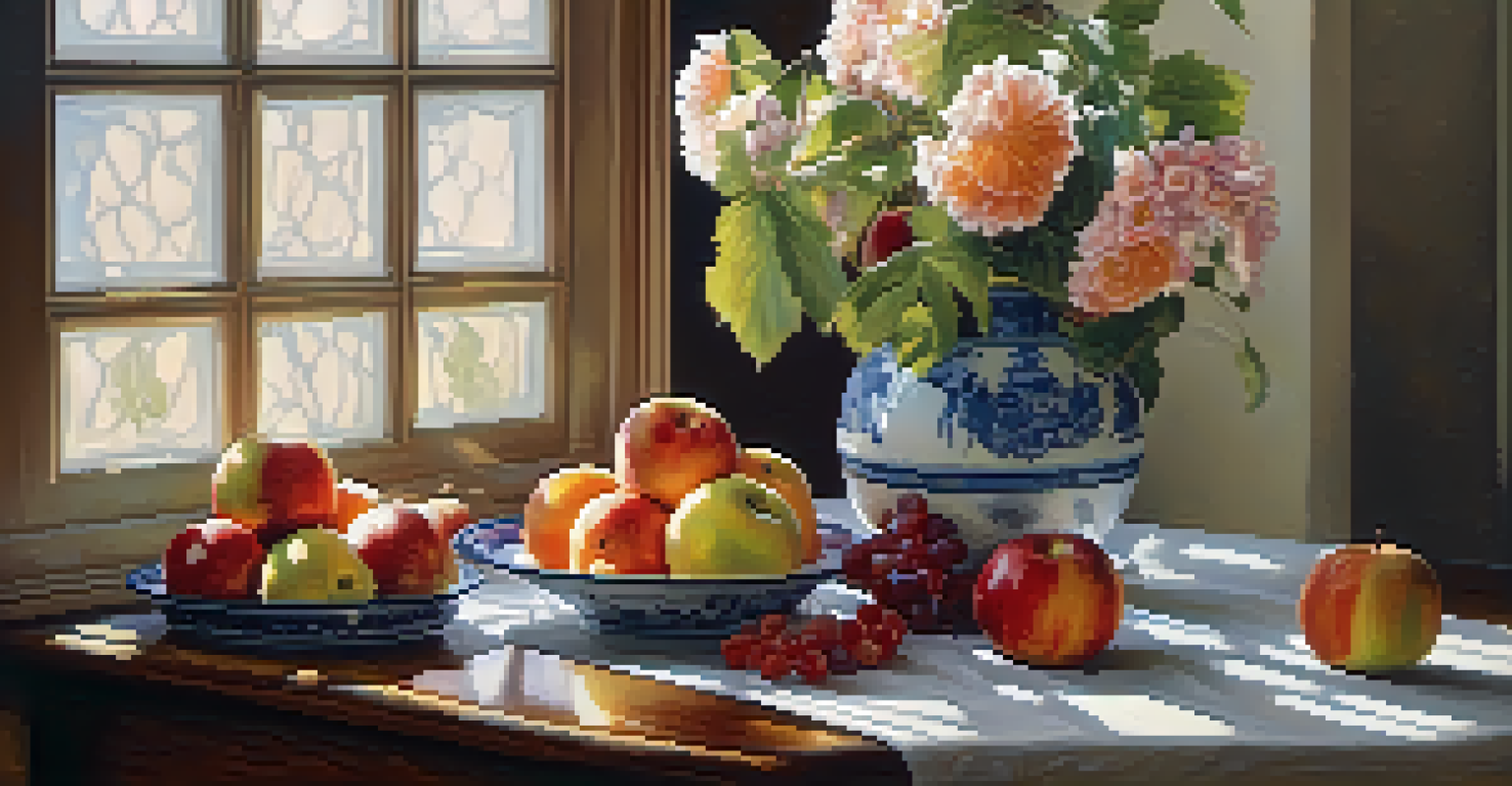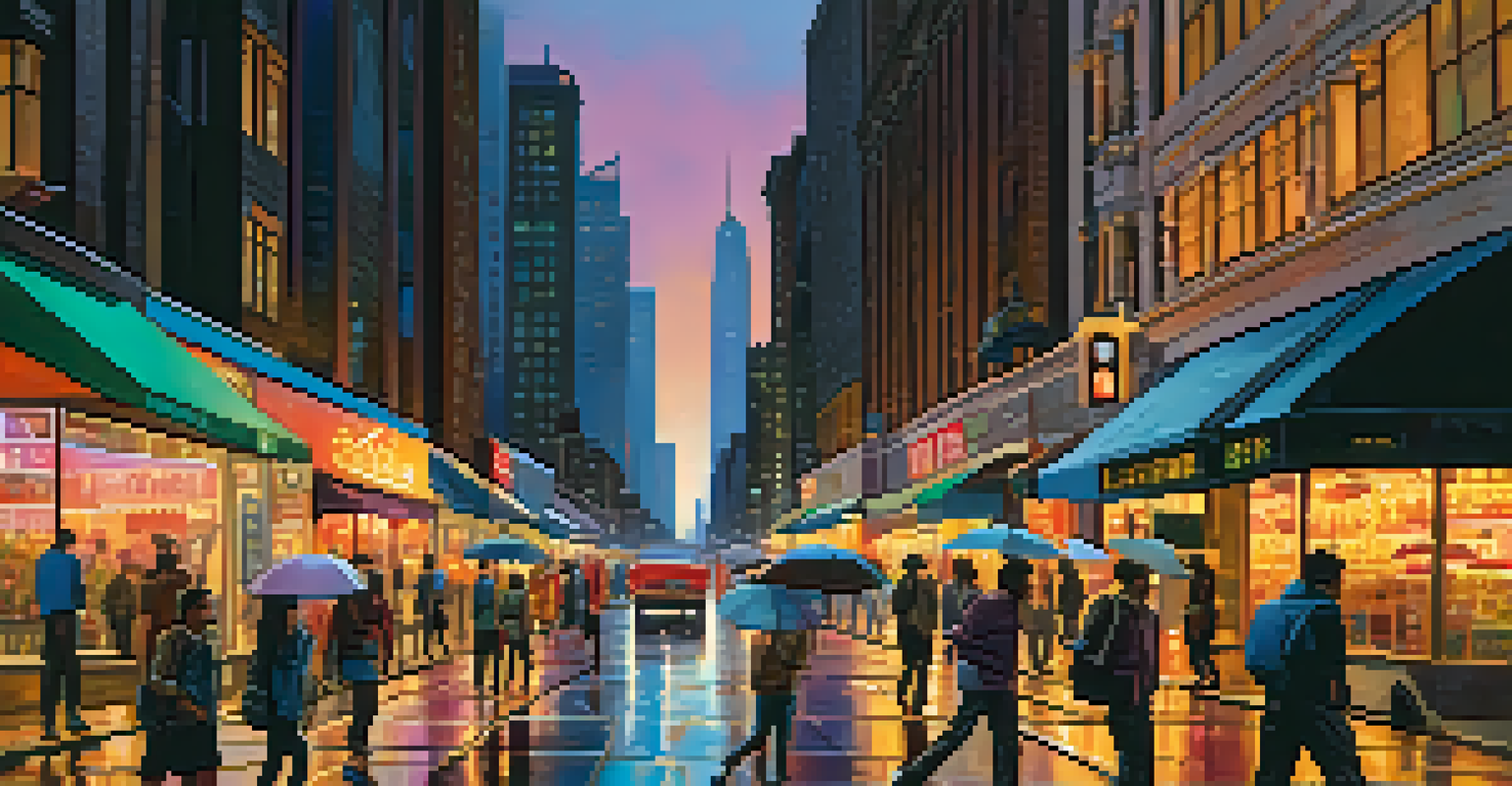The Evolution of Painting: From Canvas to Digital Screens

The Origins of Painting: A Glimpse into History
Painting dates back to prehistoric times when early humans used natural pigments to depict their surroundings. Cave paintings, like those in Lascaux, France, reveal how our ancestors expressed their stories and beliefs through art. These early works were not just for decoration; they played a vital role in rituals and communication.
Every artist dips his brush in his own soul, and paints his own nature into his pictures.
As civilizations evolved, so did painting techniques. Ancient Egyptians used a combination of mineral-based pigments and intricate methods to create vivid scenes on tomb walls. This marked a significant shift from simple representations to a more structured form of artistic expression.
Throughout history, painting has served various purposes, from record-keeping to personal expression. Each era introduced new materials and styles, laying the groundwork for the diverse art world we know today.
The Renaissance: A Turning Point in Art
The Renaissance, spanning the 14th to 17th centuries, is often regarded as a golden age for painting. This period witnessed a remarkable resurgence in interest in classical antiquity and humanism, leading to innovative techniques like perspective and chiaroscuro. Artists such as Leonardo da Vinci and Michelangelo pushed the boundaries of creativity.

Oil paint emerged during this time, allowing for greater detail and a richer color palette. Artists could now create luminous works that captured the subtleties of light and shadow. This medium became a favorite among painters, enabling them to explore new textures and styles.
Painting's Historical Evolution
From prehistoric cave art to the intricate techniques of the Renaissance, painting has continuously evolved to reflect cultural and technological changes.
Moreover, the invention of the printing press helped spread artistic ideas across Europe, fostering a vibrant exchange of techniques and styles. The Renaissance set the stage for future artistic movements and established painting as a revered form of expression.
The Baroque and Rococo: Drama and Ornamentation
Following the Renaissance, the Baroque period emerged in the late 16th century, characterized by dramatic compositions and emotional intensity. Artists like Caravaggio and Rembrandt captivated audiences with their use of light and shadow to create depth and drama. This era celebrated the grandeur and complexity of life.
Art is the most beautiful of all lies.
The Rococo style followed in the 18th century, bringing a lighter, more playful aesthetic. Think of pastel colors, intricate details, and themes of love and nature. Artists like Antoine Watteau and François Boucher focused on intimate scenes and playful narratives, appealing to a more aristocratic audience.
Both Baroque and Rococo styles showcased the evolution of painting as artists explored human emotions and the beauty of the world around them. These periods also paved the way for the subsequent movements that would continue to challenge artistic conventions.
Impressionism: Capturing Fleeting Moments
The late 19th century brought about a revolutionary shift in painting with the emergence of Impressionism. Artists like Claude Monet and Edgar Degas broke away from traditional techniques, opting instead to capture the essence of a moment through loose brushwork and vibrant colors. This style focused on light and movement, often depicting everyday life.
Impressionists painted outdoors, embracing natural light and its effects on color. This approach was a departure from the studio-based practices of their predecessors, allowing them to portray scenes in a more spontaneous manner. The term 'Impressionism' itself originated from Monet's painting 'Impression, Sunrise,' which captured this very essence.
Impressionism's Impact on Art
The Impressionist movement revolutionized painting by prioritizing light and movement over realism, influencing countless subsequent artistic styles.
This movement not only transformed how artists approached their subjects but also influenced future styles, including Post-Impressionism and Modernism. Impressionism marked a pivotal moment in art history, emphasizing perception over realism.
Modernism: Breaking Boundaries in Art
The early 20th century introduced Modernism, a movement that challenged traditional aesthetics and embraced experimentation. Artists like Pablo Picasso and Wassily Kandinsky explored abstraction, shifting focus from representational forms to emotions and ideas. This period saw the birth of Cubism and Abstract Expressionism, which redefined what art could be.
Modern artists utilized new materials and techniques, such as collage and mixed media, pushing the boundaries of painting. They often sought to reflect the rapidly changing world around them, influenced by technology and societal shifts. This era was characterized by a sense of freedom and individual expression.
As a result, Modernism laid the groundwork for contemporary art practices. Its emphasis on innovation encouraged artists to think outside the box, leading to a diverse range of styles and movements that continue to shape the art world today.
The Rise of Digital Art: A New Frontier
As technology progressed, the art world began to embrace digital mediums. Digital painting emerged in the late 20th century, offering artists new tools to create their work. Programs like Adobe Photoshop and Procreate have revolutionized how artists approach their craft, allowing for endless possibilities and experimentation.
Digital art combines traditional techniques with modern technology, enabling artists to create stunning visuals without the limitations of physical materials. This accessibility has democratized art-making, allowing more individuals to express themselves creatively. The evolution of tablets and styluses has further enhanced this experience.
Digital Art's Emerging Popularity
The rise of digital art has transformed the creative landscape, blending traditional techniques with modern technology to expand artistic expression.
Moreover, digital art has opened up new avenues for sharing and selling artwork. Online platforms and social media have transformed how artists connect with audiences, making it easier than ever to showcase their work globally. As a result, digital art is now a significant and respected part of the contemporary art landscape.
The Future of Painting: Blending Tradition and Innovation
The art world today is witnessing a fascinating blend of traditional and digital painting techniques. Many artists are experimenting with mixed media, incorporating both physical and digital elements into their work. This fusion allows for unique expressions that honor the past while embracing the future.
As technology continues to evolve, new tools and platforms will likely emerge, further shaping the landscape of painting. Virtual reality and augmented reality are already making waves, offering immersive experiences that challenge our perceptions of art. Artists can now create interactive pieces that engage viewers in entirely new ways.

Ultimately, the future of painting seems bright and full of potential. As artists continue to push boundaries and explore new mediums, we can expect to see innovative creations that inspire and provoke thought, ensuring the art form remains dynamic and relevant.